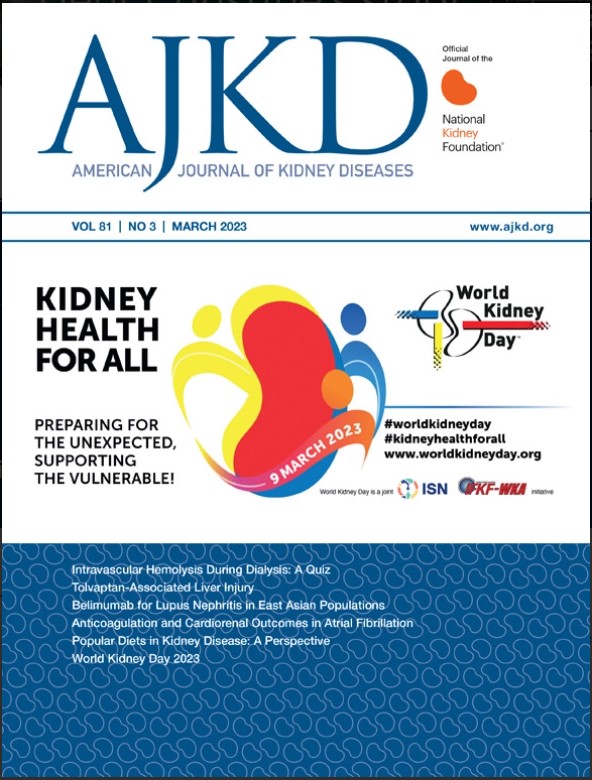常染色体显性多囊肾病:核心课程2025
IF 8.2
1区 医学
Q1 UROLOGY & NEPHROLOGY
引用次数: 0
摘要
常染色体显性多囊肾病(ADPKD)是肾衰竭最常见的遗传原因。科学进步改善了诊断、预后和处理肾脏和肾外表现的方法。肾脏总容量、肾功能和基因突变(如果已知)的结合可以预测进展为肾衰竭的风险,从而确定推荐疾病改善治疗的患者。目前,美国食品和药物管理局(FDA)批准了一种减缓ADPKD进展的疗法,即V2受体拮抗剂托伐普坦。其他治疗ADPKD的方法正在积极研究中。本核心课程讨论ADPKD的肾脏和肾外表现的诊断和治疗,包括急性和慢性疼痛、囊肿感染、多囊性肝病和颅内动脉瘤。涵盖了ADPKD的高血压管理、妇女健康和妊娠管理。该综述与最近发表的肾脏疾病改善总体结局(KDIGO)临床实践指南的结果一致,该指南用于评估、管理和治疗ADPKD。本文章由计算机程序翻译,如有差异,请以英文原文为准。
Autosomal Dominant Polycystic Kidney Disease: Core Curriculum 2025
Autosomal dominant polycystic kidney disease (ADPKD) is the most common genetic cause of kidney failure. Scientific advances have improved the approach to diagnosis, prognosis, and management of renal and extrarenal manifestations. The combination of total kidney volume, kidney function, and the genetic mutation (if known), predicts risk for progression to kidney failure, thereby identifying patients in whom disease modifying therapy is recommended. Currently there is one therapy approved by the US Food and Drug Administration (FDA) for slowing ADPKD progression, the V2 receptor antagonist, tolvaptan. Other therapies are under active investigation for ADPKD. This Core Curriculum discusses diagnosis and management of the renal and extrarenal manifestations seen in ADPKD including acute and chronic pain and cyst infection and polycystic liver disease and intracranial aneurysm. Management of hypertension and women’s health and pregnancy management in ADPKD are covered. This review was aligned with the findings of the recently published Kidney Disease Improving Global Outcomes (KDIGO) clinical practice guideline for the Evaluation, Management, and Treatment of ADPKD.
求助全文
通过发布文献求助,成功后即可免费获取论文全文。
去求助
来源期刊

American Journal of Kidney Diseases
医学-泌尿学与肾脏学
CiteScore
20.40
自引率
2.30%
发文量
732
审稿时长
3-8 weeks
期刊介绍:
The American Journal of Kidney Diseases (AJKD), the National Kidney Foundation's official journal, is globally recognized for its leadership in clinical nephrology content. Monthly, AJKD publishes original investigations on kidney diseases, hypertension, dialysis therapies, and kidney transplantation. Rigorous peer-review, statistical scrutiny, and a structured format characterize the publication process. Each issue includes case reports unveiling new diseases and potential therapeutic strategies.
 求助内容:
求助内容: 应助结果提醒方式:
应助结果提醒方式:


